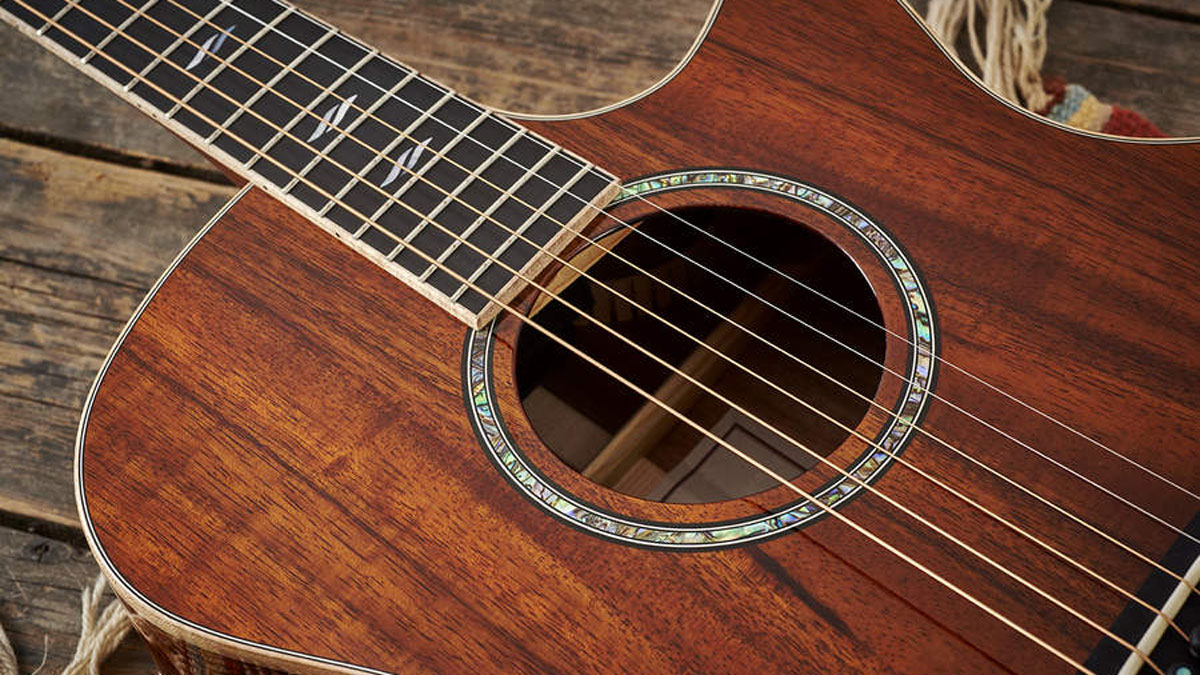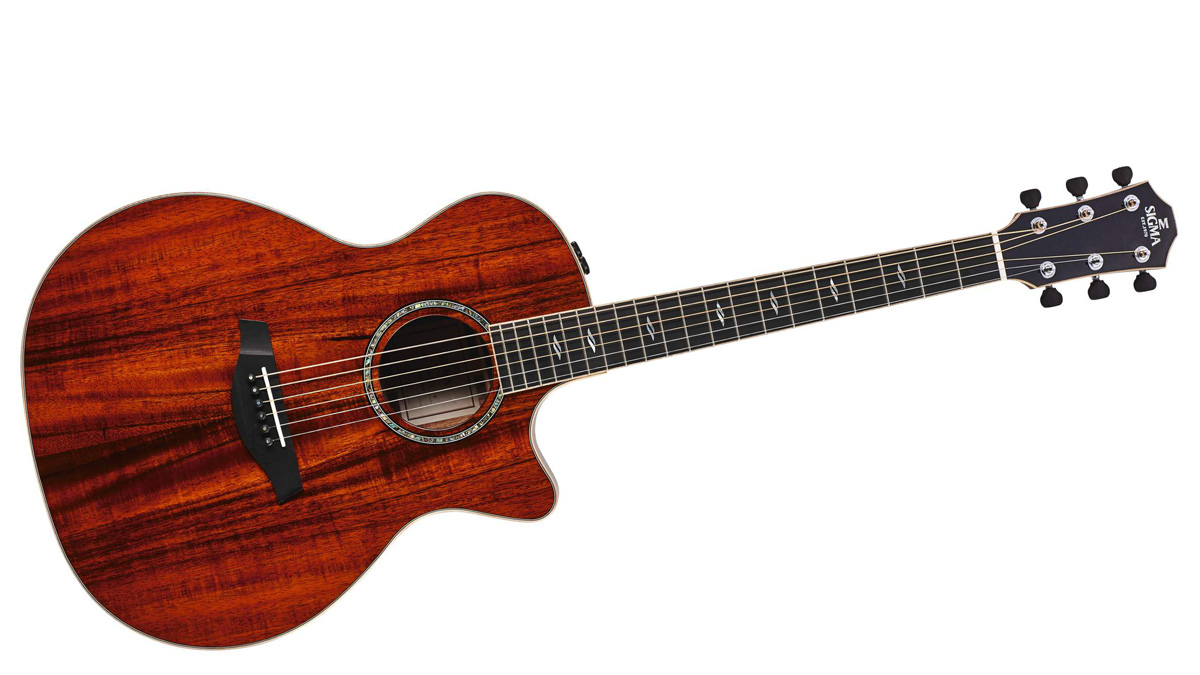MusicRadar Verdict
A solid and well-finished Taylor-inspired koa build for less than the bigger competition.
Pros
- +
Decent build.
Cons
- -
No gigbag for a £1,000 acoustic seems a little mean.
MusicRadar's got your back
There can be a fine line between being stuck in the past and merely accepting that certain things just work well together.
But 2017’s CITES regulations strictly controlling the global import and export of all species of rosewood have raised some interesting questions. As makers have scrambled to diversify the woods they use out of absolute necessity, players have been forced to examine their own tastes and prejudices. Do we see the use of non-standard tonewoods in a post-CITES market as a compromise? Or is this new tonal diversity an exciting opportunity?
Now Sigma has arrived right on cue with its new Modern Series, which break with its own conventions while bringing some fresh wood combinations into the marketplace. Originally an affordable offshoot brand owned by Martin in the 1970s, its current German owners are AMI Musical Instruments GmbH. Sigma’s familiar Martin-esque shapes have remained in the range under AMI, but Sigma’s recent models have also branched out into all-new designs and upwards into higher price points.
With all that in mind, the Modern Series introduces cutaway models, currently ranging from the spruce/mahogany GMCE-1+ to the UK-exclusive all-koa GK2CE-4+ (which we are looking at today), with further expansion of the range already planned. Many of these models feature laminate backs and sides with a new Fishman OEM system for Sigma guitars, the Flex Plus.
The woods used across the range make for impressive reading too: Macassar ebony, tilia, Australian blackwood, koa, ziricote, walnut, Alpine spruce... These less-familiar woods represent a comprehensive change for Sigma, bringing novelty and stimulating variety to these new models. On paper at least, it’s very exciting. But how does that manifest in play?
Sounds
Like the Hummingbird curves of the DM-SG5+ we tested recently, this model is a clear departure from Sigma’s past links with Martin’s iconic shapes that are still a draw for players to this day. There’s a confident Taylor-esque modernity to these Grand OM cutaways in their high-gloss, ultra-thin UV-finished tops, backs, sides and satin necks. Even the three Fishman control knobs on the upper bout edge echo the low-key design of the Expression System.
Nearer the knuckle still are the element-style inlays, whose general outline will be familiar to anyone who has played Taylor’s flagship 800 Grand Auditorium 814CE. The abalone rosette design is also highly similar to Taylor’s.
The GK2CE-4+ is heavier and more expensive than the recently-reviewed GECE-3+ due to its figured koa top and solid back and sides, plus flamed maple binding. It’s not as dramatic as the koa figuring we’ve seen on similar guitars from Taylor, due to the darker stain, but it’s equally appealing and some players may prefer the subtle overall effect here.
As a tropical hardwood, koa is traditionally associated with a bright midrange character, but it makes for an interesting comparison next to the aforementioned Macassar model. The GK2CE-4+ soon reveals the expected koa quality: bright defined mids chiming through with defined highs that hold their own.

It’s important to bear in mind that solid builds should ‘open up’ over time. So it would take a lot longer than we have with this instrument to unlock the koa’s inherent resonance and sweetness to the full. But under harder strumming it immediately yields up a deep, rich voice; a detail and resonant richness in the lower-end that offers more dynamic potential for rhythm work.
Our final verdict is settled by the electro experience. The ‘Plus’ iteration of Fishman’s Flex system offered on both these guitars uses the same Sonicore piezo pickup as the Sonitone preamp system but with bass and treble alongside a volume control. On the face of it, that is quite a basic choice for a guitar approaching £1,000 - indicating that the solid koa build is mostly responsible for the significant price difference between this and the previously-cited new addition to the Sigma line-up. Regardless, the plugged-in performance does this guitar proud here, and we’re able to test the EQ controls without finding any unpleasant brittle territory.
But there is no gigbag included - which matters for guitars designed for stage as well as home. This guitar makes it clear, though, that Sigma is now drawing inspiration from far beyond its old owner. And the tones we encountered here suggest exciting potential for the rest of Modern Series range.

Rob is the Reviews Editor for GuitarWorld.com and MusicRadar guitars, so spends most of his waking hours (and beyond) thinking about and trying the latest gear while making sure our reviews team is giving you thorough and honest tests of it. He's worked for guitar mags and sites as a writer and editor for nearly 20 years but still winces at the thought of restringing anything with a Floyd Rose.
“I have an original 909 – every time I try to use it I feel like I’m ruining it”: House hero Riva Starr on his studio essentials and his love of analogue synths
“A synthesizer that is both easy to use and fun to play whilst maintaining a decent degree of programming depth and flexibility”: PWM Mantis review
“I feel like that song had everything we needed to come back with”: Bring Me The Horizon’s Lee Malia on Shadow Moses, its riff and the secrets behind its tone, and why it was the right anthem at the right time










